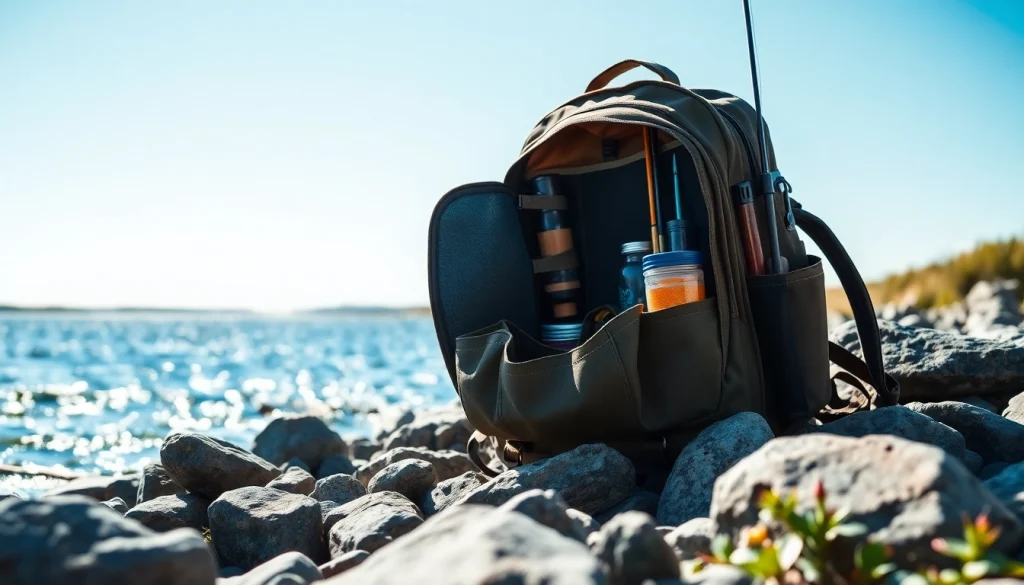
Understanding the Importance of a Fly Fishing Backpack
For enthusiasts and novices alike, the right gear can make a significant difference in the fly fishing experience. Among the essential pieces of equipment, a Fly fishing backpack stands out for its impact on convenience, organization, and overall enjoyment. Not just a mere accessory, it serves as the lifeline for carrying flies, rods, reels, and essential safety items during a fishing outing.
Key Features to Look For
When looking for a fly fishing backpack, certain features can significantly enhance the utility and comfort of the backpack. These include:
- Water Resistance: Many fly fishing backpacks are designed with waterproof materials to keep gear dry, even in wet conditions. Look for a backpack with sealed zippers and water-resistant fabrics.
- Comfortable Straps: Padded, adjustable shoulder straps and waist belts can greatly reduce discomfort during long treks, allowing for a more enjoyable experience.
- Multiple Compartments: Adequate compartmentalization is vital for quick access to different supplies. Look for specialized pockets for flies, tools, and personal items.
- Lightweight Construction: A lightweight backpack is crucial for agility. Choose materials that do not compromise durability while minimizing weight.
- Ventilation: Adjustable back panels with ventilation channels can help with airflow and heat dissipation, keeping the user comfortable during warm weather.
How a Good Backpack Enhances Your Experience
A well-designed fly fishing backpack transcends mere functionality; it enhances the entire fishing experience. With an organized layout, anglers can quickly access their gear, allowing for seamless transitions between casting and reeling. Comfort is another substantial benefit; a backpack designed with ergonomic principles helps distribute weight evenly, reducing fatigue and strain on the body. Moreover, proper organization minimizes time spent rummaging around for tools or bait, allowing users to spend more time focusing on what truly matters—fishing.
Common Misconceptions About Fly Fishing Backpacks
Despite their importance, misconceptions about fly fishing backpacks persist. Some people assume that any backpack will suffice for carrying fishing gear. However, a dedicated fly fishing backpack is purpose-built for the specific needs of anglers, offering features that standard backpacks lack. Others believe clunky designs equate to more storage options, leading them to overlook modern, sleek designs that are more efficient and easier to carry. Understanding these misconceptions will help buyers make informed decisions about what they need for their fishing adventures.
Top Materials and Construction Techniques for Fly Fishing Backpacks
The construction of a fly fishing backpack significantly affects its durability and performance. Knowing the right materials and techniques can assist buyers in making valuable choices.
Water Resistance and Durability
In fly fishing, exposure to water is inevitable. For this reason, a reliable Fly fishing backpack should be made of waterproof or highly water-resistant materials such as nylon with TPU coatings. Additionally, high-frequency welded seams provide extra protection against water infiltration. Testing the material in diverse conditions prior to committing to a product can provide insights into its real-world performance.
Comfort Features and Ergonomics
Comfort features such as padded straps and customizable fit systems are essential for a successful outing. Backpacks made with adjustable harness systems allow for precision fitting to the user’s body, which enhances mobility and reduces the risk of injury. Ergonomic design considers body mechanics, ensuring that the backpack does not put undue stress on the back, hips, or shoulders. It is advisable always to try on a backpack before purchasing, checking how different design elements come together for overall comfort.
Styles and Designs: Choosing What’s Right for You
Selecting the right style of fly fishing backpack can depend on various factors including fishing style, location, and duration. Options range from traditional backpacks to hip packs, sling packs, and vests, each offering unique benefits. For example, a larger traditional backpack is perfect for day-long excursions with ample gear, while a hip pack may be more suitable for short trips where minimal equipment is necessary. Careful consideration of individual needs will ensure a more enjoyable fishing experience.
Essential Gear to Pack in Your Fly Fishing Backpack
Knowing what to pack in your fly fishing backpack can optimize your fishing experience. It’s important to factor in various supplies for different scenarios.
Basic Fishing Supplies
The foundation of any fly fishing backpack should include basic fishing supplies. Necessary items typically encompass:
- Flies: A well-stocked fly box with a variety of options for different conditions and fish species.
- Leader line and tippet: Essential for attaching flies and adjusting to varying conditions.
- Tools: Scissors, forceps, and nippers should be packed for on-the-spot adjustments.
- Reel and extra spool: Always have a backup plan, so keeping an extra spool is prudent.
Emergency and Safety Items
Safety should never be compromised. Essential emergency items to pack may include:
- First aid kit: A small, comprehensive kit can address minor injuries that may occur.
- Emergency whistle: A compact item can facilitate signaling for help.
- Multi-tool or knife: Versatile for various purposes during fishing.
- Water purification system: Keeping hydrated is crucial; bring along purification tablets or a portable filter.
Organizational Tools for Efficiency
Effective organization can significantly streamline the fishing process. Suitable tools and components include:
- Tackle organization boxes: These can keep hooks, weights, and other small items separated and accessible.
- Waterproof pouches: Protect important documents like licenses or personal items from moisture.
- Gear loops and attachment points: These features allow for easy access to frequently used gear like nippers or safety glasses.
Tips for Maintaining Your Fly Fishing Backpack
To extend the life of your fly fishing backpack, regular maintenance is essential. Here are some tips to keep your backpack in prime condition.
Cleaning and Care Instructions
After a fishing trip, it’s vital to clean your backpack to prevent dirt and water from lingering and impacting material integrity. Start by emptying all compartments and brushing off debris. Depending on the material, you can spot-clean with warm soapy water or, in some cases, toss it in the gentle cycle of a washing machine. Ensure all items are thoroughly dried before re-packing to avoid mildew.
Storage Tips for Longevity
Proper storage can significantly influence the lifespan of a fly fishing backpack. Store your backpack in a cool, dry place, and avoid folding it in creased positions that can weaken the material. Utilizing storage boxes or hangers can help maintain the backpack’s shape and integrity, providing it will serve you well for many adventures ahead.
Seasonal Considerations
Different seasons may require different maintenance routines. For example, during off-seasons, inspect the backpack for leaks or damages and make necessary repairs before the fishing season commences. Regularly check the zippers and straps for wear and tear, ensuring they perform well during your next fishing escapade.
Where to Buy the Best Fly Fishing Backpacks
Deciding where to purchase a fly fishing backpack can be as crucial as the selection itself. Several avenues exist, each with its own perks and considerations.
Online Retailers vs Local Shops
Online retailers often feature a broader range of products, allowing for comparison shopping in terms of both features and price. On the other hand, local shops provide an opportunity to try on products and gain expert fitting advice tailored to individual needs. Balancing convenience with personalization is key to making the best purchasing decision.
Comparing Prices and Features
When considering a fly fishing backpack, pricing can vary widely. It is advisable to set a budget beforehand while ensuring that the selected backpack doesn’t compromise on essential features. Create a comparative list of the features each backpack offers to assess the value each option presents. This approach will help maintain focus on what’s truly necessary.
Reading Reviews and Making Informed Choices
Before finalizing a purchase, taking the time to read reviews can offer a significant advantage. Insights from other users regarding durability, comfort, and functionality can shed light on real-world performance. Make use of online communities or check product review sections on e-commerce sites to fill in any gaps of knowledge.





